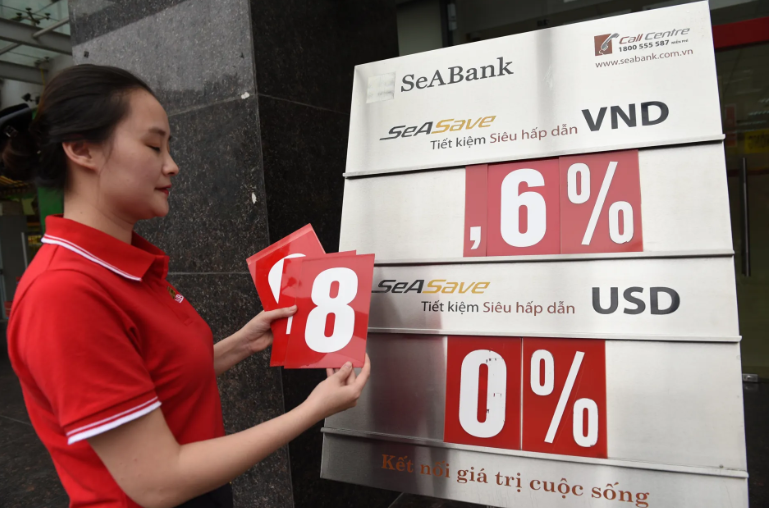Over US$682 billion in credit poured into Vietnam's economy by mid-April
The government has also instructed banks to facilitate access to credit to promote production and business development.
THE HANOI TIMES — Total outstanding credit in Vietnam's banking system reached over US$682 billion as of mid-April, an increase of 3.95% from the end of 2024.

An employee at SeABank's Hanoi branch adjusts the interest rate board. Photo: Pham Hung/The Hanoi Times
This information was provided in a report submitted by the State Bank of Vietnam (SBV) to the National Assembly.
According to the report, credit growth in the first months of the year continued to focus on business production, with priority given to growth-driving sectors, in line with the directives of the government and the prime minister.
As of April 15, total outstanding credit reached VND16,230 trillion (US$682 billion), up 3.95% from the end of 2024 and grew by 18.19% year-on-year.
In addition, the average loan rate continued to decline. As of April 10, the average interest rate for new loans was 6.34% per annum, down 0.6% from the end of 2024. Banks have published their lending rates on their websites to provide more information to customers seeking loans.
Since the beginning of the year, the State Bank of Vietnam has implemented various measures to improve access to credit, such as using information technology, simplifying credit procedures, offering incentive programs, and restructuring debt repayment schedules to help customers facing difficulties.
The government has also instructed banks to facilitate access to credit, including efforts for real estate project developers, home buyers, contractors, and material suppliers to improve liquidity in the real estate market.
This year, the SBV aims for a credit growth target of about 16%, double the GDP growth target. To support credit supply, it has publicly announced transparent guidelines for allocating credit growth targets to banks.
Moreover, the government continues to implement its plan to phase out the practice of assigning individual credit growth targets to specific financial institutions. Foreign banks, joint venture banks, cooperative banks, and non-bank financial institutions are now allowed to independently manage their credit growth targets for this year.



![[Infographic] Vietnam's economic outlook in Q1 2025](https://cdn-media.hanoitimes.vn/resources2025/1/users/97/infographic/infographic-vietnam-economic-outlook-q1-2025-thumbnail-1744451300.png?w=480&h=320&q=100)







